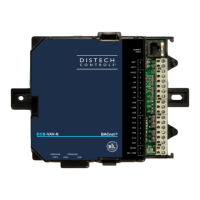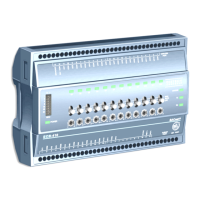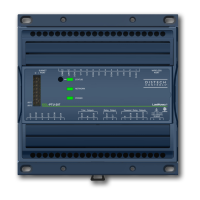17ECB-VAVS Preloaded Applications
VAV Performance Assessment Control Charts (VPACC)
The ECB-VAVS VPACC feature, which is embedded into the ECB-VAVScontrol sequences, provides
a means of automatically detecting when the VAV is operating outside of its design parameters.
In a traditional sequence of operations, alarms are triggered when the value of a point stays outside
the alarm limit for a defined period of time. The VPACC improves on this, since it has the capability to
set off a warning condition automatically should the system be unstable or consistently too high or low,
even if the alarm points are never reached.
Additional benefits of the VPACC:
£ Identify failure or unstable control where standard alarming would fail
£ Track equipment control over a long period of time
£ Identify failure before occupant complaints
£ Monitor system only when in occupied mode
£ Increase building efficiency
£ Reduce major equipment replacement and emergency equipment replacement
£ No need to program alarm in EC-BOS or EC-Net Pro.
VPACC Functionality
The example below shows that the airflow of a VAV is unstable. The VPACC feature can detect and
diagnose this unstable control by evaluating the frequency of errors over time and producing an alarm
should the frequency exceed the established parameters. The VPACC fault detection alerts can be
viewed from the dc
gfx
Applications graphics pages and displayed in the EC-Net Web pages. The
VPACC is available with all VAV controllers and is used in your custom VAV sequence using
gfx
Appli-
cations code library.
Figure3: VPACC Functionality
Sequence of Operation

